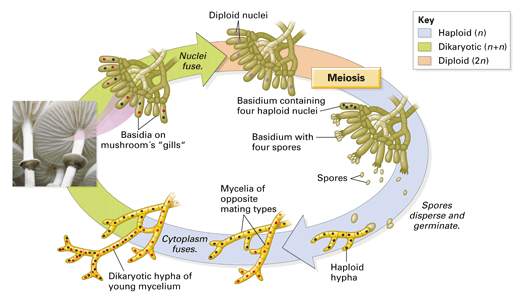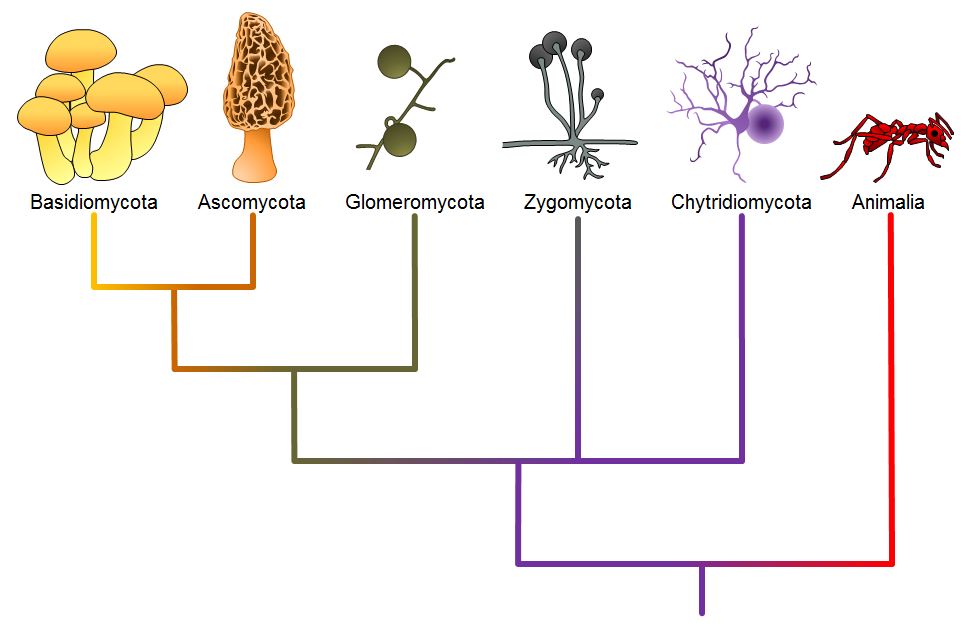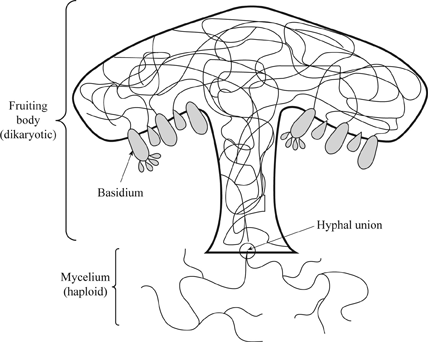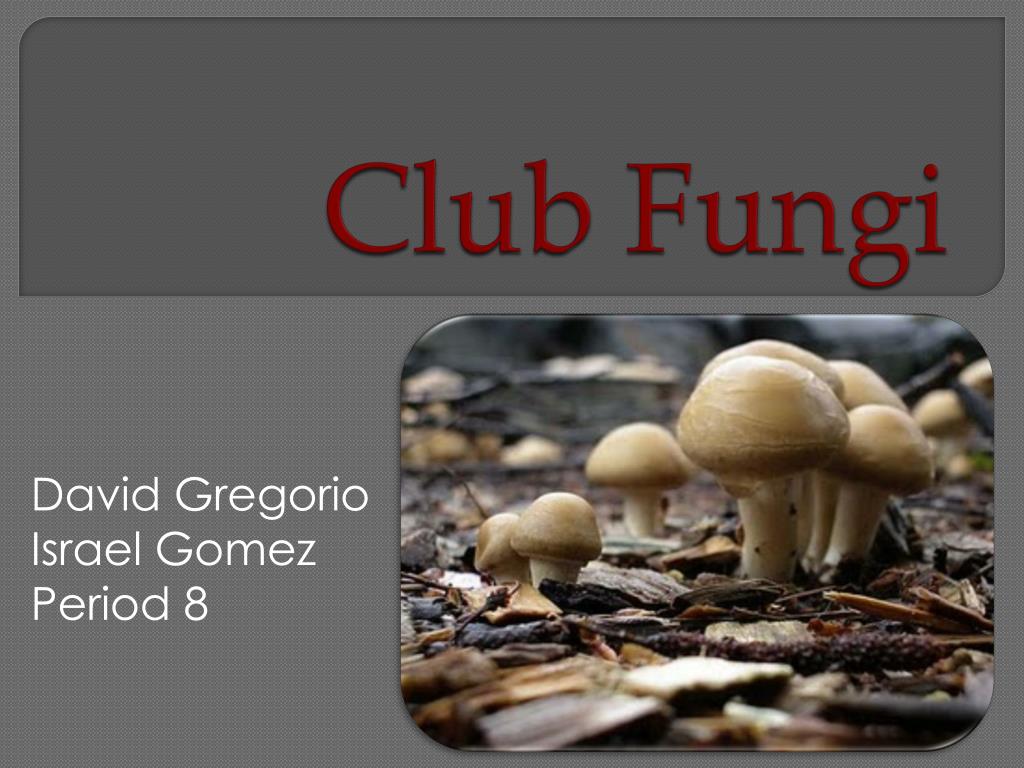Club fungi belong to the phylum Basidiomycota This phylum alongside the phylum Ascomycota constitutes the fungal subkingdom Dikarya The Dikarya subkingdom is considered toTHE CHARACTERISTICS OF FUNGI Fungi include puffballs, yeasts, mushrooms, toadstools, rusts, smuts, ringworm, and molds The antibiotic penicillin isThe kingdom fungi are made up of lichen, yeast, mushrooms, and moldsTable Contents the Fungi Kingdom010 Introduction Kingdom Fungi023 Fungi Facts052 How

Chapter 18 Concept 18 2
Club fungi characteristics
Club fungi characteristics-Fungi are heterotrophic organisms Fungi are filamentous, with the exception of unicellular yeasts The network of hyphae is known as mycelium Some hyphae are continuous tubes filled with multinucleated cytoplasm, these are called coenocytic hyphae and others have septae or cross walls in their hyphae The cell walls of fungi are composed ofA small clubshaped structure typically bearing four basidiospores at the ends of minute projections eukaryote A cell that contains a nucleus and membrane bound organelles




Basidiomycota Fungi And Deuteromycota Fungi Youtube
Morels are Ascomycete Fungi 21 Basidiomycete or Club Fungi 22 Life Cycle of Basidiomycete Fungi 23 Bracket Fungi Puff Balls Mushrooms Jelly Fungi Basidiomycete Fungi that all produce Basiospores 24 Other Basidiomycetes Rusts and Smuts Rust infecting wheat leaves Rust infecting a Leaf Whitrot Smut digesting old wood 25 3 Other sac fungi have important uses a Penicillium is used as an antibiotic and to flavor some cheeses b Aspergillus flavors soy sauce and is also used in soft drink production 224 Basidiomycetes—The Club Fungi Club fungi include mushrooms, shelf fungi, coral fungi, puffballs, and stinkhorns 1The sterigmata are developed from a more or less clublike structure, called a basidium (pl basidia) for which the Basidiomycetes have been frequently named as club fungi The basidium was discovered by Levelle in 17 Mating Systems of Basidiomycetes About 10 per cent, of Basidiomycetes are homothallic
Basidiomycetes are often called club fungi because the cells (basidia) that bear the sexual spores resemble a small club Produced during its sexual cycle, it can bear millions of spores on clubshaped basidia located on the surface of its gillsADVERTISEMENTS It is formed by the germination of a basidiospore and contains a single haploid (n) nucleus in each cell It bears neither sex organs nor any basidia and basidiospores Read this BiologyWise article, which explains various characteristics of fungi The plural of fungus is "fungi", and it is one of the five kingdoms of organisms Kingdom Fungi is further grouped into four major subgroups;
One of the characteristics that is common to all sac fungi is that reproduce through ascospores borne on sac like ascusThe ascospores are released by breaking the wall of ascus The ascospores of different members may be of varying size, shape and colourIn higher Ascomycotina the ascus are borne inside a protected fruiting body known as ascocarpCharacteristics of members of the Kingdom Fungi 4 are NOT plants because a Plants are autotrophs and fungi are heterotrophs Plants use photosynthesis to make their own food using chlorophyll and accessory pigments Fungi do not! This phylum contributes fungi used to make beer, bread, cheese, and medicines Examples include Aspergillus and Penicillium Phylum Basidiomycota The club fungi, or basidiomycetes, belonging to the phylum Basidiomycota produce basidiospores on clubshaped structures called basidia The phylum includes most common mushrooms, smut fungi, and rust




Characteristics And Major Groups For Fungi



Chapter 11 Protists And Fungi 7th Grade Science Kile Mingo
Rapid advances in molecular biology and the sequencing of 18S rRNA (ribosomal RNA) continue to show new and different relationships among the various categories of fungi The five true phyla of fungi are the Chytridiomycota (Chytrids), the Zygomycota (conjugated fungi), the Ascomycota (sac fungi), the Basidiomycota (club fungi) and the recentlyEdible mushrooms, noxious plant pathogens rusts and smuts, puffballs, and bracket/shelf fungi are all club fungi Basidiomycetes are called so for their characteristics, clubshaped (hence also called club fungi) sexual reproductive structure, the basidium (plural basidia)The division of fungi known as the club fungi, Basidiomycota, includes some of the most familiar fungi Mushrooms, puffballs, and shelf fungi are all members of this group, as are the plant rusts and smuts This group, which contains approximately 15,000 known species, is distinguished by the presence of a club shaped reproductive organ called the basidium




Powerpoint 5 Agarics Gilled Mushrooms Characteristics Flashcards Quizlet




Classifications Of Fungi Biology 2e
The Fungi Kingdom 2 Basidiomycota (Club fungi ) have a clubshaped part which produces the spores 3 Ascomycota (Sac Fungi) produce spores in saclike structures EX yeasts, cup fungi, powdery mildews, & lichens Lichens 4 Types of Fungi a fungus and an organism with chlorophyll (cyanobacteria or algae) that live togetherMushrooms, puffballs, and stinkhorns; They can be either singlecelled or multicellular organism Fungi consist of long threadlike structures known as hyphae These hyphae together form a meshlike structure called mycelium Fungi possess a cell wall which is made up of chitin and polysaccharides



Club Fungi King Of Kingdoms




Definition Of The Major Groups Of Fungi Chegg Com
Characteristics of Fungi Fungi are eukaryotic, nonvascular, nonmotile and heterotrophic organisms They may be unicellular or filamentous They reproduce by means of spores Fungi exhibit the phenomenon of alternation of generation Fungi lack chlorophyll and hence cannot perform photosynthesis What are the 5 characteristics of fungi?The algaelike conjugating fungi have a continuous mycelium containing hundreds or thousands of nuclei, with no divisions between them Species of conjugating fungi cause potato blight, downy mildew, black bread mold, and water mold (which affects dead leaves and sticks in water)



Basidiomycota




Basidiomycota Phylum Of Fungi Britannica
The five true phyla of fungi are the Chytridiomycota (Chytrids), the Zygomycota (conjugated fungi), the Ascomycota (sac fungi), the Basidiomycota (club fungi) and the recently described Phylum Glomeromycota The Deuteromycota is an informal group of unrelated fungi that all share a common character – they use strictly asexual reproductionBasidiomycota, large and diverse phylum of fungi (kingdom Fungi) that includes jelly and shelf fungi;The "male" strain produces an antheridium and the "female" strain develops an ascogonium At fertilization, the antheridium and the ascogonium combine in plasmogamy without nuclear fusion Special ascogenous hyphae arise, in which pairs of nuclei migrate one from the "male" strain and one from the "female" strain




Basidiomycota Fungi And Deuteromycota Fungi Youtube




Ppt Club Fungi Powerpoint Presentation Free Download Id



0 件のコメント:
コメントを投稿